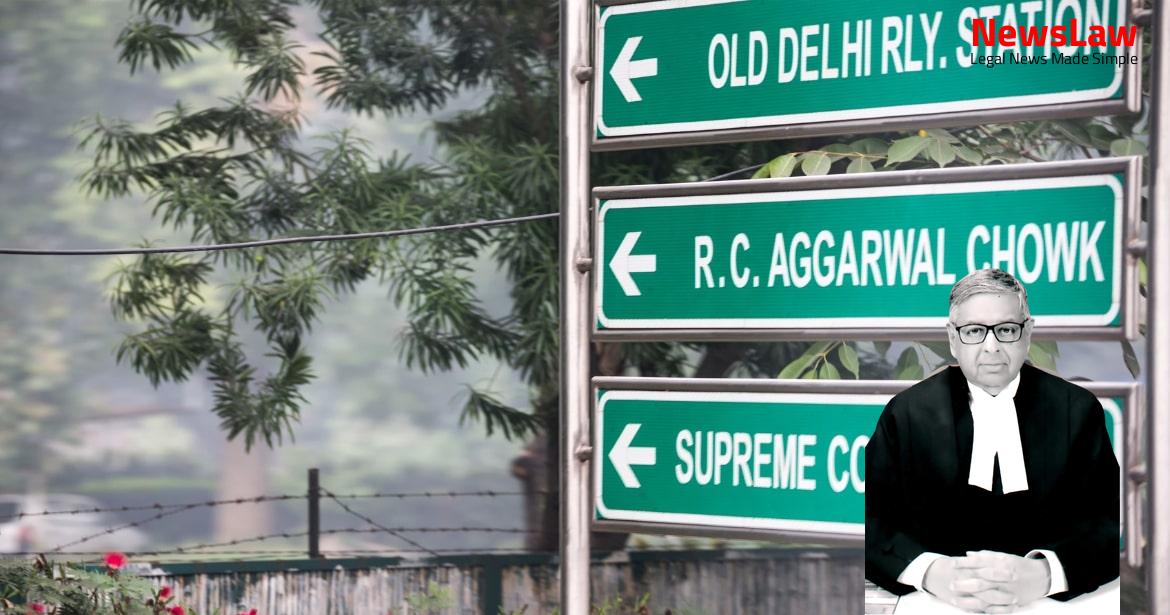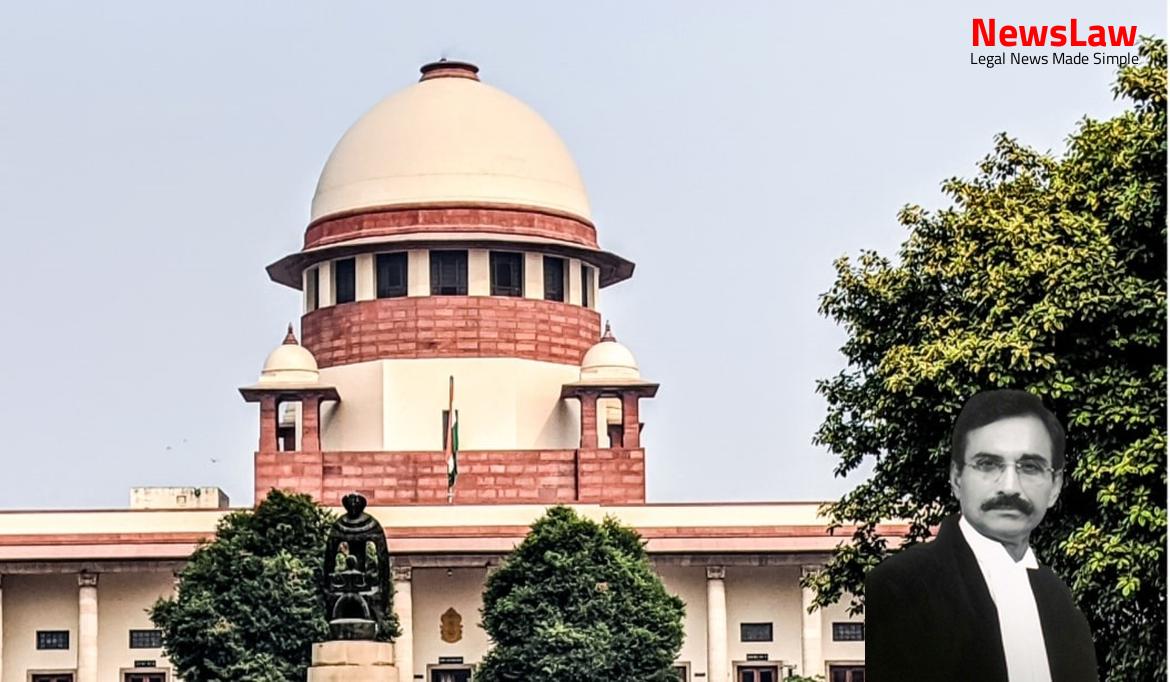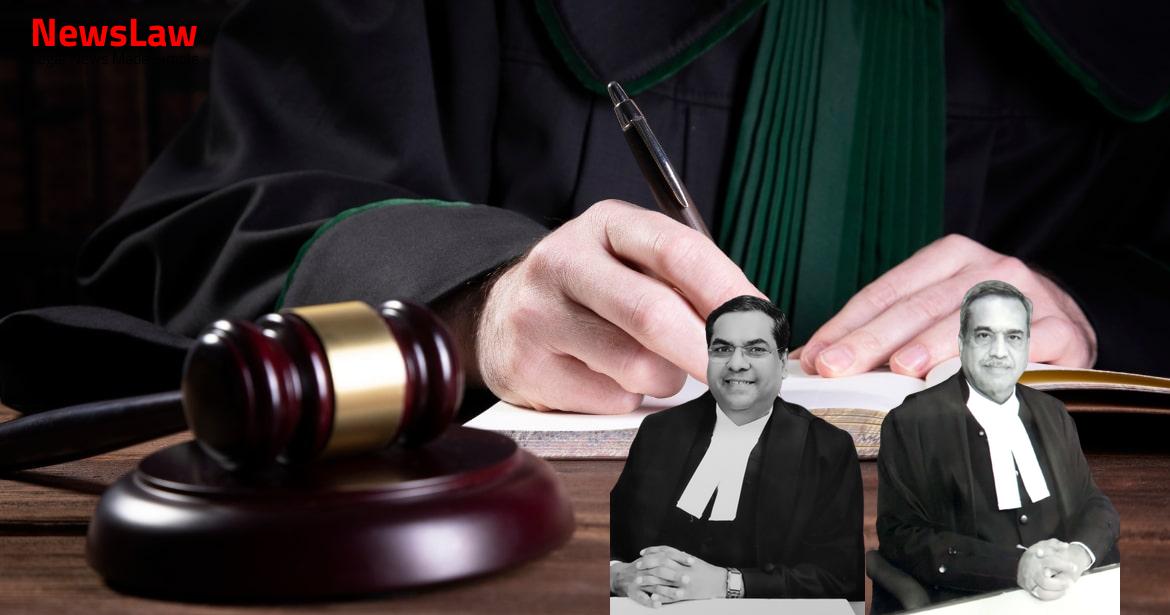In a crucial legal battle over land ownership, the Supreme Court has ruled in the case of Dargah Niyamatullah Shah Quadri vs. Namdeo Deosthan Trust. The judgement sheds light on the longstanding dispute and its resolution, setting a precedent for similar cases in the future. Dive into the details of this landmark decision and its impact on property rights and legal proceedings.
Facts
- A suit was filed by the plaintiffs before the trial court seeking declaration of certain lands as Inam lands of Niyamatullah Shah Dargah Haregaon and possession of those lands.
- Plaintiffs claimed that the possession of the land in question was unlawfully given to Namdeo Deosthan Trust by the Government on 19.08.1978 and requested for restoration of possession.
- Defendants contested the suit on grounds including non-joinder of necessary parties, ownership of the land by the Trust since ancient times, and delay in filing the suit within the limitation period.
- The present appellants and others also contested the suit during the trial.
- Some of the plaintiffs passed away during the appeal, and their legal representatives were not substituted in the proceedings.
- The trial court held that all necessary parties had been joined in the suit.
- District Judge reversed the trial court’s judgement, concluding that the land originally belonged to Dargah Niyamatullah Shah Quadri and the plaintiffs and Defendant No. 12 were the Inamdars of the suit land.
- High Court modified the decree, holding that the plaintiffs and Defendant No. 12 were descendents of Mutawalis and not Inamdars.
- Trial court held that the plaintiffs failed to prove that the suit land was Inam land or that the plaintiffs are Inamdars.
- First appellate court held that the plaintiffs were entitled to a decree for possession of the suit land, allowing the appeal and decreeing the suit in favor of the plaintiffs and Defendant No. 12 against Defendant Nos. 1 to 11 and 15.
- High Court dismissed the appeal, holding that the Government had wrongly given possession of the suit property.
- Trial court had previously dismissed the suit of the plaintiffs, holding that it was not filed within the period of limitation.
Also Read: Succession of Properties: Rule of Primogeniture vs. Law of Rulership
Arguments
- The plaintiffs are descendents of Mutawalis, holding a managerial post over the properties.
- The appeal does not abate due to this fact.
- The plaintiffs are required to prove that the land in question belongs to the Dargah.
- The second submission was that the suit was barred by limitation.
- The suit was deemed not maintainable by the respondent.
- The High Court was accused of granting reliefs not prayed for by the plaintiffs.
- The issue of title was considered a finding of fact by the District Judge and confirmed by the High Court.
Also Read: Enforcement of Foreign Award: Case of Oscar Investments Limited and RHC Holding Private Limited
Analysis
- The plaintiffs discovered crucial information in 1986 regarding their status as successors of the original Mutawali of the Dargah.
- The suit for possession of immovable property is governed by a 12-year limitation period from when possession becomes adverse to the plaintiff.
- The High Court granted a lesser relief of Mutawalis to the plaintiffs, who had initially claimed the higher status of Inamdars.
- The civil court had jurisdiction over the suit’s subject matter as it concerned the ownership of Dargah properties, not just whether they were Wakf properties.
- Documentary evidence proved ownership of the Dargah land dating back to 1915, supporting the plaintiffs’ claim.
- The possession of the land was transferred to the Trust only in 1978, as per records.
- No application for additional evidence was filed during the appeal process.
- The suit was filed within the limitation period, as possession was handed over to the Trust in 1978.
- The plaintiffs proved ownership of the Dargah land through historical records.
- Multiple entries in official records confirmed the Dargah’s ownership of the land.
- The suit included prayers for both declaration and possession, falling within the 12-year limitation period for possession based on title.
- High Court found that civil court had jurisdiction to decide the suit.
- Appellants/defendants filed applications during the appeal to submit additional documents not presented in the trial court.
- No explanation was provided for why the documents were not filed in the trial court.
- These additional documents cannot be considered at this stage of the legal process.
Also Read: NGOs Substantial Financing Case: Supreme Court’s Judgment on Public Authority Definition
Decision
- Applications rejected, documents not considered.
- No merit found in the appeal.
- Appeal dismissed.
- Pending application(s) disposed of.
Case Title: SOPANRAO Vs. SYED MEHMOOD .
Case Number: C.A. No.-004478-004478 / 2007



